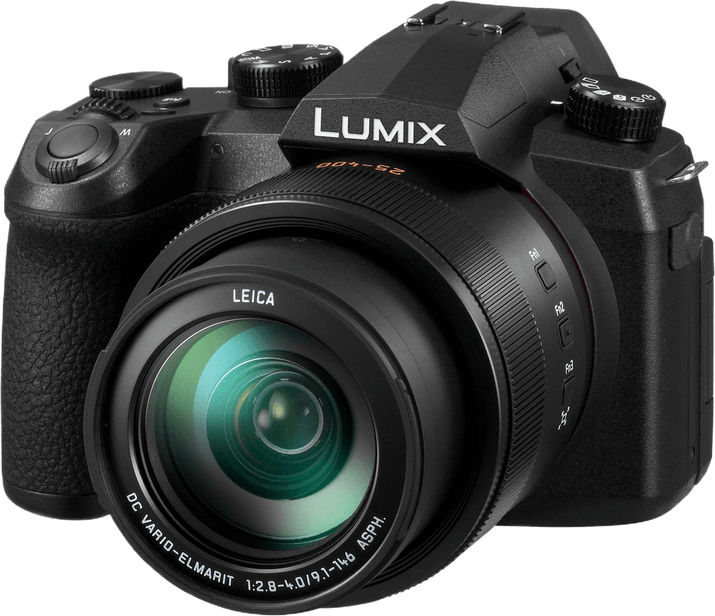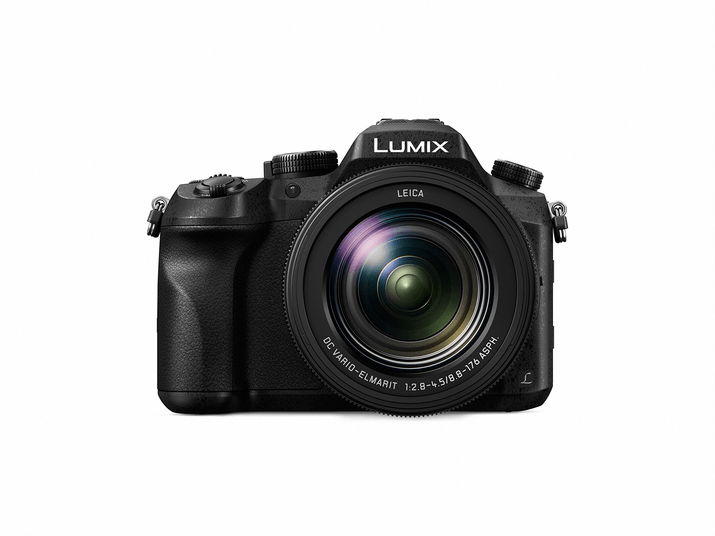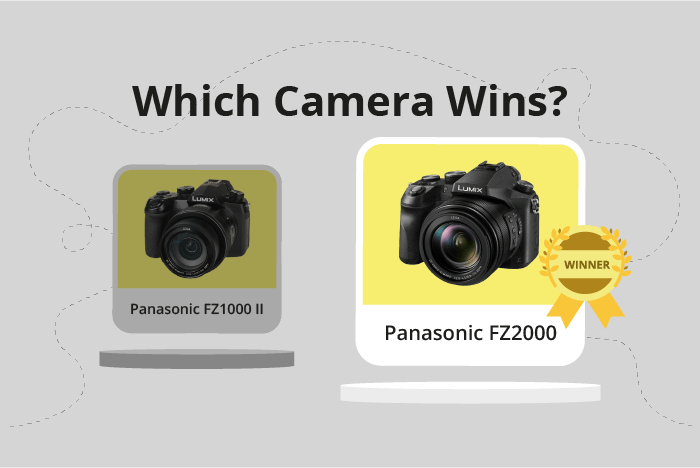Panasonic Lumix DMC-FZ1000 II vs Lumix DMC-FZ2000 / FZ2500 Comparison
Panasonic Lumix DMC-FZ1000 II

Panasonic Lumix DMC-FZ2000 / FZ2500

The Panasonic Lumix DMC-FZ2000 / FZ2500 outperforms the Panasonic Lumix DMC-FZ1000 II with a score of 63/100 versus 54/100. Both cameras share common features, such as being bridge-type cameras with similar sizes and weights – the FZ2000 measures 138 x 102 x 135mm and weighs 915g, while the FZ1000 II measures 136 x 97 x 132mm and weighs 808g.
The FZ2000 has a higher score because it offers better overall performance and features. However, the FZ1000 II has its advantages, such as being lighter and having a more affordable launch price of $899 compared to the FZ2000’s $1199.
Taking these factors into account, the FZ2000 is the better choice for those seeking top-notch performance and features, while the FZ1000 II is a suitable option for those prioritizing affordability and a lighter camera.
Panasonic Lumix DMC-FZ1000 II vs Lumix DMC-FZ2000 / FZ2500 Overview and Optics
The Panasonic Lumix DMC-FZ2000 / FZ2500 takes the lead in optics with a score of 62/100, just one point ahead of the Panasonic Lumix DMC-FZ1000 II, which scored 61/100. Both cameras share several common specifications, such as 20 megapixels, a shooting speed of 12, a CMOS sensor, the Venus Engine processor, a 1″ sensor size, a fixed lens mount, and image stabilization.
The FZ2000 / FZ2500 surpasses the FZ1000 II in terms of sensor performance, as evidenced by its DXOMARK score of 70 compared to the FZ1000 II’s score of 64. This higher score means the FZ2000 / FZ2500 has better image quality, which is an important factor for photographers.
On the other hand, the FZ1000 II does not have any significant advantages over the FZ2000 / FZ2500 in terms of optics. Both cameras have the same megapixels, shooting speed, sensor type, processor, sensor size, lens mount, and image stabilization. This means that the FZ1000 II is not necessarily worse in terms of optics, but it does not stand out either.
Considering these points, the Panasonic Lumix DMC-FZ2000 / FZ2500 is the better option for those seeking superior image quality due to its higher DXOMARK score. The Panasonic Lumix DMC-FZ1000 II, while not inferior in other aspects, does not offer any notable advantages in optics compared to the FZ2000 / FZ2500.
Panasonic Lumix DMC-FZ1000 II vs Lumix DMC-FZ2000 / FZ2500 Video Performance
The Panasonic Lumix DMC-FZ1000 II emerges as the winner in terms of video capabilities with a score of 83/100, while the Panasonic Lumix DMC-FZ2000 / FZ2500 scores 69/100. Both cameras share common specifications, such as 4K maximum video resolution, the ability to capture videos at 60fps, and similar maximum video dimensions.
The FZ1000 II outperforms the FZ2000 / FZ2500 due to its built-in time-lapse functionality, a feature that the latter lacks. This added functionality allows users to create stunning time-lapse videos effortlessly, making the FZ1000 II more versatile in terms of creative video projects.
On the other hand, the FZ2000 / FZ2500 offers slightly higher maximum video dimensions at 4096 x 2160, compared to the FZ1000 II’s 3840 x 2160. However, this minor difference in dimensions does not give the FZ2000 / FZ2500 a significant advantage over the FZ1000 II, as both cameras provide excellent 4K video quality.
Taking into account the video capabilities of both cameras, it is evident that the Panasonic Lumix DMC-FZ1000 II holds an edge over the Panasonic Lumix DMC-FZ2000 / FZ2500. The built-in time-lapse functionality enhances the FZ1000 II’s appeal to videographers who seek creative options in their projects. While the FZ2000 / FZ2500 has marginally larger video dimensions, it ultimately falls short in comparison due to the absence of time-lapse functionality.
Panasonic Lumix DMC-FZ1000 II vs Lumix DMC-FZ2000 / FZ2500 Features and Benefits
The Panasonic Lumix DMC-FZ2000 / FZ2500 is the winner in this comparison, scoring 70 out of 100 points in features, while the Panasonic Lumix DMC-FZ1000 II scores 41 points. Both cameras share some specifications, but the FZ2000 / FZ2500 has several superior features.
Both cameras have a 3-inch screen size, lack GPS, and include WIFI capabilities. However, the FZ2000 / FZ2500 has a higher screen resolution of 1,040,000 dots, compared to the FZ1000 II’s 921,000 dots. This difference provides a clearer and more detailed display on the FZ2000 / FZ2500. Additionally, the FZ2000 / FZ2500 has a touchscreen, which allows for easier navigation and control. Both cameras have a flip screen, but the FZ2000 / FZ2500’s touchscreen gives it an advantage in usability.
The FZ2000 / FZ2500 also has Bluetooth, which the FZ1000 II lacks. This feature enables easier connectivity and file transfer between devices. The FZ1000 II does not have any significant advantages over the FZ2000 / FZ2500 in terms of features.
Considering these points, the Panasonic Lumix DMC-FZ2000 / FZ2500 is the better camera due to its higher screen resolution, touchscreen capabilities, and Bluetooth connectivity. The FZ1000 II, although sharing some specifications with the FZ2000 / FZ2500, falls short in comparison.
Panasonic Lumix DMC-FZ1000 II vs Lumix DMC-FZ2000 / FZ2500 Storage and Battery
The Panasonic Lumix DMC-FZ1000 II and the Panasonic Lumix DMC-FZ2000 / FZ2500 both have a storage and battery score of 35/100. Both cameras have one memory card slot and accept SD, SDHC, and SDXC memory cards. The FZ1000 II is UHS-I compatible, while the FZ2000 / FZ2500 does not specify compatibility. Both cameras use the DMW-BLC12 battery type and offer USB charging.
The FZ1000 II edges out the FZ2000 / FZ2500 with a slightly longer battery life, providing 360 shots compared to the FZ2000 / FZ2500’s 350 shots. This advantage may be beneficial for photographers who require more shooting time.
On the other hand, the FZ2000 / FZ2500 does not have any notable advantages in storage and battery over the FZ1000 II. Both cameras share similar specifications in this regard, making them equally suitable for most users.
Considering the storage and battery aspects, the FZ1000 II and the FZ2000 / FZ2500 are quite similar. The FZ1000 II’s slightly longer battery life is its only advantage, but it may not be significant enough to sway potential buyers. Ultimately, the choice between these two cameras will likely depend on other factors such as price, features, and personal preferences.
Alternatives to the Panasonic Lumix DMC-FZ1000 II and Lumix DMC-FZ2000 / FZ2500
Are you still undecided about which camera is right for you? Have a look at these popular comparisons that feature the Panasonic Lumix DMC-FZ1000 II or the Panasonic Lumix DMC-FZ2000 / FZ2500:
- Panasonic Lumix DMC-FZ2000 / FZ2500 vs Lumix FZ80 / FZ82
- Panasonic Lumix DMC-FZ2000 / FZ2500 vs Lumix FZ300 / FZ330
- Canon PowerShot SX70 HS vs Panasonic Lumix DMC-FZ2000 / FZ2500
- Nikon Coolpix P950 vs Panasonic Lumix DMC-FZ2000 / FZ2500
- Panasonic Lumix DMC-FZ2000 / FZ2500 vs Sony Cyber-shot RX10 IV
- Panasonic Lumix DMC-FZ1000 II vs Lumix FZ300 / FZ330

